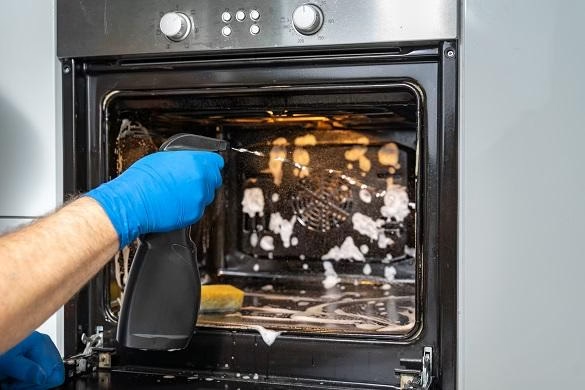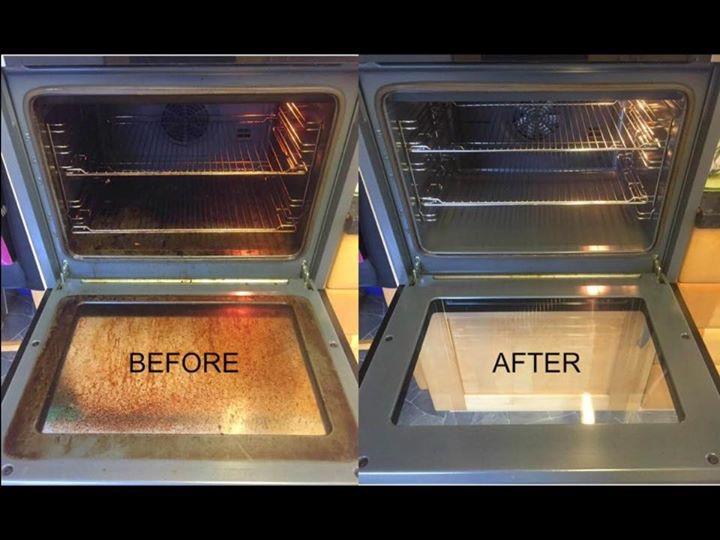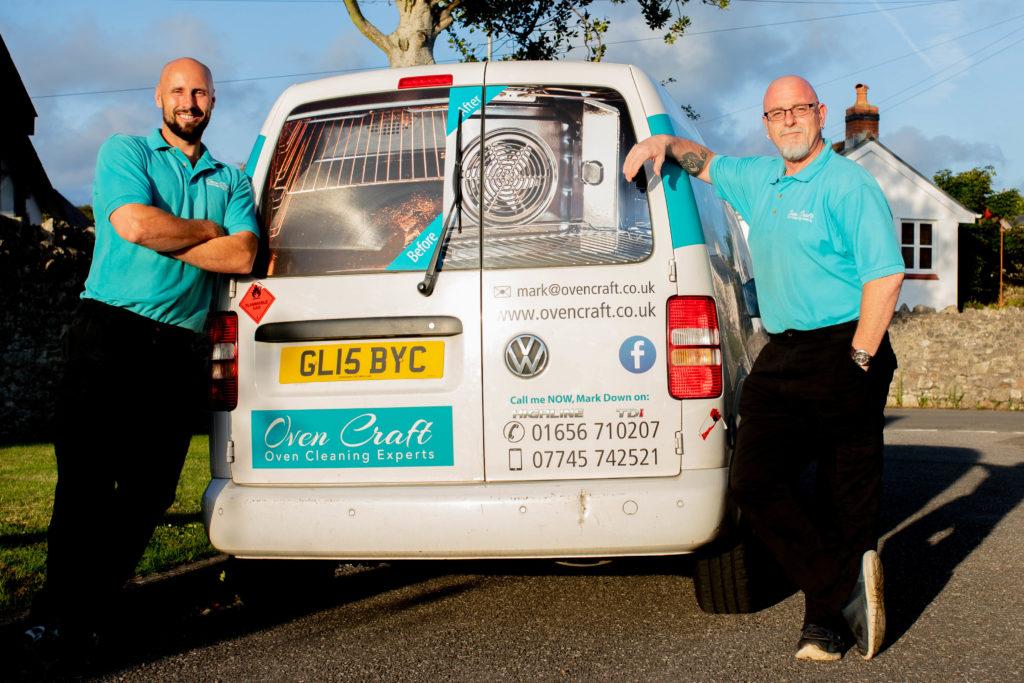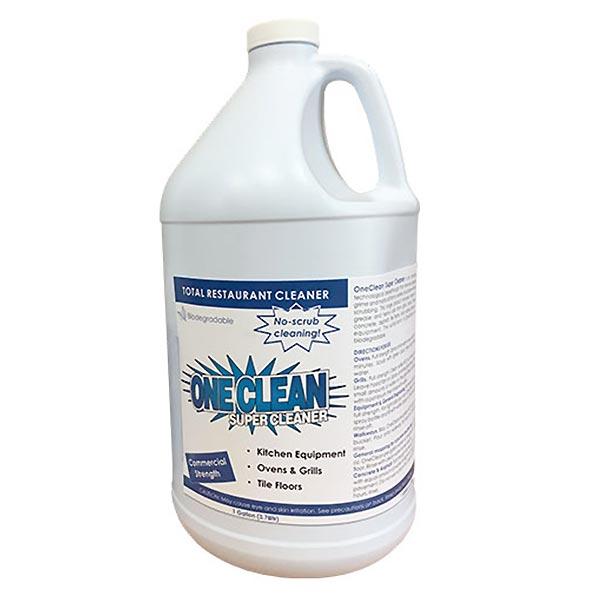
Few appliances work harder than the humble oven, and few wear their efforts quite so visibly. From Sunday roasts to late‑night pizzas, heat and time conspire to leave behind baked-on grease, stubborn carbon, and lingering odours. Across the UK, professional oven cleaning services have stepped in to tackle the job many of us postpone, bringing specialised tools, non-caustic solutions, and a methodical approach that goes far beyond a quick wipe-down.
This article explores what oven cleaning services in the UK actually do, how they work, and what you can expect in terms of process, safety, and results. We’ll outline common service types for single, double, and range ovens (including AGA and Rangemaster models), explain the typical steps-such as component removal, heated dip-tank treatment, and interior degreasing-and consider factors that influence cost and time. You’ll also find guidance on choosing a provider, from insurance and accreditation to eco-friendly practices and end-of-tenancy requirements.
Whether you’re aiming to improve hygiene, restore performance, or simply save yourself a messy afternoon, understanding the UK market for oven cleaning can help you decide if a professional visit is worth it-and how to make the most of it.
Table of Contents
- Inside a professional oven clean in the UK from booking to sparkle
- What it really costs typical price bands by oven type and service level
- Eco safe chemistry and certifications to look for in your kitchen
- How to choose a reliable provider questions to ask and red flags to avoid
- Closing Remarks
Inside a professional oven clean in the UK from booking to sparkle
From the moment you tap “Book” you’ll get a clear, fixed quote and a precise arrival window via SMS/email. On the day, a uniformed technician protects floors, checks the cooker type, and captures quick “before” photos. Racks, trays, back panels and fan covers are removed; carbon-crusted parts are bathed in a van-mounted, heated dip tank using caustic-free solutions, while the cavity is treated with low-odour gel, detailing every corner, rail, and vent. Glass is split and de-greased, the hob and knobs are de-gunked, and stubborn spills are lifted with safe scrapers and steam. Throughout, your kitchen stays tidy: mats down, sinks guarded, and waste contained-so the only thing left behind is a silent, showroom sheen.
- Included: Floor protection, dip-tank service, cavity detail, hob and glass clean, seals and rails wipe-down.
- Optional extras: Bulb and filter replacements, tray re-seasoning, extractor deep-clean.
- Good to know: Solutions are pet- and child-friendly; most ovens are ready to use straight away.
| Stage | What you’ll see | Time |
|---|---|---|
| Booking | Instant quote + ETA | 2-3 mins |
| Arrival | Mats down, briefing | 5 mins |
| Strip-down | Racks/panels removed | 10-15 mins |
| Dip-tank | Parts soaking outside | 20-40 mins |
| Cavity detail | Scrape, gel, steam | 30-60 mins |
| Rebuild | Polish, glass, checks | 10-20 mins |
| Handover | Aftercare + photos | 5 mins |
After reassembly, the engineer runs heat and fan tests, replaces trays, and buffs the finish to a streak-free glow. You’ll get simple aftercare: crack the door open on first heat to let any trace moisture evaporate; wipe spills while warm; refresh with a quick microfibre once a week. Payment is contactless, photos and invoice land in your inbox, and a gentle reminder suggests your next visit-typically every 6-12 months (ranges and AGAs benefit from the shorter end). The result is a cooker that looks, smells, and performs like new-without harsh fumes, mess, or disruption to your day.
What it really costs typical price bands by oven type and service level
Across the UK, prices tend to cluster into three clear bands: Standard for lightly used appliances, Deep for stubborn carbon and glass panel build‑up, and Premium Detail for full strip-down attention and cosmetic finishing. Expect London and major cities to sit at the upper end, while off‑peak weekday slots and bundles (oven + hob + hood) can pull costs down. Parts such as bulbs and filters are usually extra, while labour to fit them may be included in higher tiers.
Use the guide below as a practical benchmark when shortlisting providers and comparing like‑for‑like quotes. If you’re choosing between tiers, weigh up recent usage (roasting/baking frequency), the last professional clean, and whether you want between‑glass disassembly, seal care, and rack restoration-often the difference between a good clean and a showroom refresh.
| Oven Type | Standard | Deep | Premium Detail |
|---|---|---|---|
| Single Oven | £50-£65 | £65-£85 | £85-£110 |
| Double Oven | £65-£85 | £80-£110 | £110-£140 |
| Range 90-100cm | £90-£120 | £110-£150 | £150-£200 |
| Range 110cm+ | £110-£140 | £135-£180 | £180-£240 |
| AGA/Rayburn (2-4 oven) | £120-£160 | £160-£210 | £210-£280 |
- What each tier usually includes: Standard = non‑caustic soak of removable parts, cavity degrease, door glass outer/inner; Deep = baked‑on carbon removal, between‑glass where accessible, rack revival, seal care; Premium Detail = full detail polish, door reassembly, labour for bulb/filter change (parts extra), stainless finishing.
- Common add‑ons/adjustments: Hob clean £15-£30, extractor/hood £15-£35, extra racks/trays £3-£5 each, bulb/filters (parts) £5-£15, evening/weekend +10-20%, London/South East +10-25%, multi‑appliance bundle savings 10-20%, parking/congestion if applicable.
Eco safe chemistry and certifications to look for in your kitchen
Grease needs muscle, but the smartest results come from planet‑friendly formulations that still cut through baked‑on carbon. Look for blends built around biodegradable surfactants, plant‑based solvents, and enzymes that loosen fats without harsh fumes. Mild alkalinity (think sodium carbonate over caustic soda) paired with citrate or lactic acid helps lift residues and rinse clean, while microfibre, steam, and heat-assisted dwell times reduce the total chemistry needed. Professional providers across the UK increasingly use low‑VOC, fragrance‑free options that leave ovens food‑ready faster and kinder to indoor air.
- Enzyme-powered degreasers – target baked fats at lower pH.
- Mild alkalinity – effective on carbon without caustic burn risk.
- Biodegradable surfactants – faster breakdown after rinsing.
- Low‑VOC, dye‑ and fragrance‑free – calmer on airways and senses.
- Refillable concentrates – less plastic, fewer deliveries.
- SDS on request – transparent ingredients and safe handling.
Trust marks help separate good intentions from proven practice. Ask your technician for Safety Data Sheets (SDS) and a COSHH risk assessment, then scan for third‑party verification of product and service standards. In the UK, reputable oven cleaning teams often align with A.I.S.E. sustainability charters, choose agents bearing the EU Ecolabel, and operate under systems like ISO 14001 for environmental management. For added assurance, check household‑friendly seals (e.g., Allergy UK) and ethical badges such as Leaping Bunny; disinfectants, where used, should be HSE/GB‑BPR authorised for their intended purpose.
| Mark | What it tells you |
|---|---|
| EU Ecolabel | Lower impact chemistry and proven performance |
| A.I.S.E. Charter | Lifecycle focus on safe, sustainable cleaning |
| HSE/GB‑BPR Authorised | Legally approved biocidal use in the UK |
| Allergy UK | Formulations assessed for sensitive homes |
| Leaping Bunny | No animal testing across supply chain |
| ISO 14001 | Certified environmental management system |
How to choose a reliable provider questions to ask and red flags to avoid
Before you book, cut through the marketing by getting concrete answers. Ask about public liability insurance (ideally £2M+) and whether technicians are trained and vetted (e.g., Which? Trusted Traders, SafeContractor, or strong review histories). Clarify the products used-look for caustic-free, low-odour solutions and confirm COSHH safety data sheets are available. Make sure they dismantle doors, racks, fans and use a heated dip tank outside the home. Confirm a fixed, written price (not “from”), what’s included (bulbs, trays, extractor filters), and the time estimate by oven type. Ask about a guarantee (what’s covered and for how long), whether they provide before/after photos, and any practicalities-parking, access, pets/children safety, and preferred payment methods with an invoice (company reg or VAT details if applicable).
- Insurance: What level and can you show the certificate?
- Methods & chemicals: Are they caustic-free and fume-light? Can I see COSHH sheets?
- Process: Do you remove door glass, fan plates, and soak parts in a heated dip tank?
- Price & scope: Is the quote fixed and does it include seals, bulbs, trays, and extractor hoods?
- Timing: How long for a single, double, or range cooker?
- Credentials: Are you on Which? Trusted Traders/Checkatrade or SafeContractor accredited?
- Proof: Can you share recent photos or references in my area?
- Guarantee: What’s covered if I’m not satisfied within 7-14 days?
- Logistics: Any prep I need to do? Do you need parking or hot water access?
- Payment: Do you provide a VAT or company invoice and card payments?
Be wary of warning signs that often lead to poor results or damage. Avoid providers who are cash-only with no invoice, give vague “from” pricing, or push last-minute upsells on arrival. Steer clear if they won’t show insurance or refuse to share safety data sheets. Red flags include no disassembly (“just a spray-and-wipe”), harsh chemical fumes with instructions to leave windows open for hours, unrealistic timescales (“10-minute clean”), and no written guarantee. Be cautious of only a mobile number, no physical address, unbranded vehicles, missing ID, or a pattern of reviews mentioning damage, no-shows, or bait-and-switch pricing. Pressure tactics (“deal ends today”) and requests for full payment upfront without paperwork are further reasons to walk away.
- Pricing traps: “From £” quotes, surprise add-ons for racks, trays, or hoods.
- Process shortcuts: No door/fan removal; declines dip-tank cleaning.
- Safety gaps: No PPE, no COSHH, strong fumes around kids/pets.
- Accountability: No guarantee, no invoice, no business details.
- Reputation: Sparse or suspicious reviews; inconsistent communication.
| Quick proof to request | What it reveals |
|---|---|
| Insurance certificate (date/limit) | Financial cover if damage occurs |
| COSHH sheet for cleaners used | Product safety and transparency |
| Fixed, written quote | No hidden extras on arrival |
| Photo portfolio or references | Consistent, quality results |
| Guarantee terms (in writing) | Aftercare and accountability |
Closing Remarks
Whether your oven fuels Sunday roasts or quick midweek meals, keeping it clean is less about sparkle and more about safe, consistent cooking. Across the UK, services range from one‑off deep cleans to scheduled maintenance, from independents to nationwide teams. If you do book, check what’s included (racks, fans, trays, bulbs, seals), the cleaning method used, insurance and guarantees, VAT and any parking or congestion charges, and how waste and odours are managed. If you don’t, that’s fine too-regular wipe-downs and a little routine care go a long way.
In the end, the best choice is the one that suits your kitchen, your budget, and how you like to cook. A clean oven heats evenly, smells fresher, and lets the food take centre stage-crispy chips, flaky pies, and Yorkshire puds that rise like they mean it. However you get there-DIY or professional-the result is the same: less smoke, fewer surprises, and a calmer, more capable kitchen.





